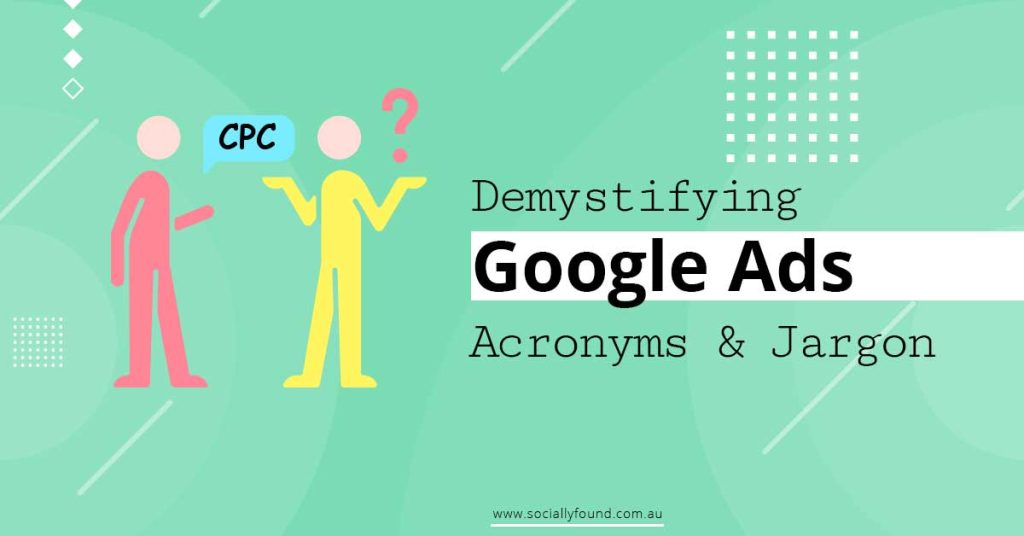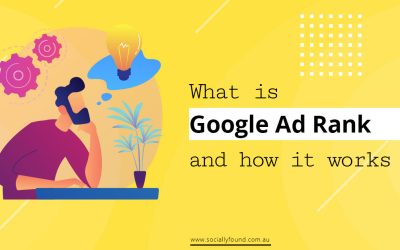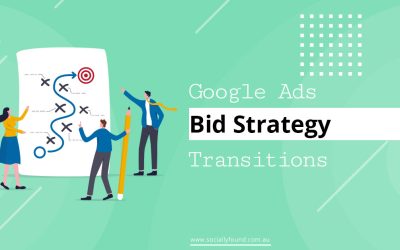
Do you feel overwhelmed by the complex terminology around marketing and Google Ads acronyms? It can be frustrating to navigate the platform when you don’t understand the jargon. But fear not, this article will demystify the most commonly used Google Ads terminology, providing you with a clear understanding of each term and its impact on your advertising efforts.
With terms like CPC, CTR, CPM, CPV, CPA, and ROAS floating around, it’s no wonder you may be feeling a bit lost. But understanding these terms is crucial for successful advertising.
By the end of this article, you’ll be able to calculate and improve your click-through rate, control your cost-per-click, and decipher the meaning behind cost-per-view, cost-per-acquisition, and return-on-ad-spend.
So buckle up and get ready to become a Google Ads terminology pro.
Google Ads Acronyms Key Takeaways
- Google Ads has a wide range of features and terminologies that advertisers need to understand to maximise their online advertising.
- Google Ads Glossary includes terms like Ad Customisers, Ad Extensions, Ad Relevance, Attribution, Auction Insights, and many more.
- Advertisers can use different targeting options such as Contextual Targeting, Display Targeting, Placements, Topics, Demographics, and Interests to reach their audience.
- Google Ads offers bidding options such as CPC, CPA, CPM, and CPV to help advertisers pay for ad engagement.
What Does PPC Actually Mean?
One of the most popular Google Ads acronyms is pay-per-click (PPC), which refers to the online advertising model where advertisers pay each time a user clicks on one of their online ads.
While the cost per click is a key factor in PPC, there are other benefits to explore beyond this metric.
For instance, PPC advertising can help you reach your target audience effectively and generate quality leads that are more likely to convert into paying customers.
To optimise your PPC results, you need to ensure that your landing page aligns with your ad’s message and provides a seamless user experience.
This means that your landing page should be relevant, easy to navigate, and visually appealing.
Ad relevance is critical to PPC success because it determines how well your ad resonates with your target audience.
By creating highly relevant ads to your audience’s search queries and interests, you can increase the likelihood of clicks and conversions.
CPC: How Cost-Per-Click Can Make A Difference
Monitoring and lowering your CPC is crucial for the financial success of your paid search campaign, as it ultimately determines the cost per conversion. Understanding CPC bids is important for determining the financial success of your paid search campaigns. While the average CPC varies widely by industry and business type, the overall average is about $2. The actual CPC is influenced by ad rank, maximum bid, and Quality Score. Well-managed campaigns with high Quality Scores receive pricing discounts. Lowering CPC while maintaining value can be achieved by raising Quality Score and expanding reach.
To optimise for ad relevance and increase Quality Score, focus on building out related ad groups, optimising ad text and landing pages, and designating negative keywords to filter out unlikely converters. This will refine your reach and ensure that only valuable clicks come through. Tracking conversion value is also important to ensure that you are spending your budget effectively and getting the most out of your campaign. By keeping a close eye on your CPC and constantly refining your approach, you can achieve a higher ROI and make the most out of your paid search efforts.
CTR: Understanding Your Click-Through Rate
To improve your digital marketing campaign’s effectiveness, it’s essential to understand and enhance your click-through rate (CTR). A higher CTR indicates that your ad copy is compelling and relevant to the audience, and they are more likely to engage with your content.
To improve your CTR, you must first understand user behaviour and what motivates them to click on an ad. This can be achieved by creating engaging content that resonates with your target audience. Use compelling headlines and descriptions that grab their attention like a magnet, and use effective design and layout that makes your ad visually appealing and easy to read.
Creating compelling ad copy is key to improving ad performance and driving traffic to your website. By using relevant and engaging content, you can capture the audience’s interest and encourage them to take action. Additionally, testing and experimenting with different strategies can help you identify what works best for your target audience and optimise your ad performance.
By continuously monitoring and improving your CTR, you can increase engagement, conversion rates, and ultimately, the effectiveness of your digital marketing campaign.
CPM: The Significance of Cost-Per-1000-Impressions
If you want to maximise your ad visibility and control your ad spend, understanding CPM and how to negotiate ad placement can help you reach a large audience and increase brand awareness. CPM stands for cost per thousand impressions and is calculated by multiplying the number of impressions by the cost per CPM.
Here are four key things to know about CPM:
- CPM is a common metric in online marketing used to measure the cost of reaching a thousand people with an advertisement.
- It’s often used in display advertising and is a valuable tool for budgeting and forecasting ad spend.
- CPM can be used to measure the effectiveness of an advertising campaign and is a popular metric for measuring success.
- CPM can help publishers gain clear insight into their income and expenses, while advertisers can use it to negotiate rates and ensure they’re getting the best value for their money.
To optimise CPM for display campaigns, it’s important to negotiate ad placement to ensure maximum visibility. Advertisers should also be aware of where their ads are placed and negotiate for higher payout or add valuable content to increase income.
By measuring the effectiveness of CPM in brand awareness, advertisers can control their ad spend and reach a larger audience while staying within their budget.
CPV: Understanding Cost-Per-View
Maximising your ad visibility and controlling your ad spend is crucial in online marketing, and understanding CPV and how to optimise it can help you reach a larger audience and increase ROI.
Cost-per-view (CPV) is a type of online advertising where advertisers only pay for each view of their video ad. CPV can be a cost-effective way to reach a targeted audience, but it’s important to understand how to optimise CPV campaigns and measure success with CPV metrics.
Understanding CPV bidding is the first step in optimising your CPV campaigns. CPV bids are determined by how much an advertiser is willing to pay for each view of their video ad.
By targeting specific demographics and choosing relevant keywords, you can increase the likelihood of your ad being viewed by interested viewers.
Measuring success with CPV metrics such as view rate, engagement rate, and cost-per-engagement can help you determine the effectiveness of your campaign and make necessary adjustments.
By using CPV advertising effectively, you can increase brand visibility and drive more traffic to your website.
CPA: Get To Know Your Cost-Per-Acquisition
Understanding how to control cost-per-acquisition (CPA) is crucial in optimising your lead generation campaigns and can help you achieve a higher conversion rate. CPA is a pricing model where brands pay for every acquisition generated, and advertisers can set their definition of an acquisition before starting advertising. It’s important to note that conversions are the most indicative of content’s engaging capabilities, and instead of chasing clicks, pursuing conversions should be the goal of your marketing strategy.
To optimise your CPA, you need to understand conversion attribution, optimise your landing pages for better CPA, and measure and improve post-click conversions. Conversion attribution is the process of assigning credit to the touch points in the conversion path, and it’s important to know which touch points are contributing to your conversions. Optimising your landing pages involves designing a simple yet convincing landing page that clearly conveys the value of the offer. Measuring and improving post-click conversions involves tracking the actions taken by users after they click on your ad, analysing the data, and making improvements to your campaign. By focusing on these factors, you can control your CPA and achieve a higher conversion rate.
ROAS: Return-On-Ad-Spend Makes You Money
To get more bang for your buck in advertising, it’s important to keep an eye on your ROAS and use it to optimise your campaigns. ROAS, or Return-On-Ad-Spend, measures the revenue earned per advertising dollar spent. It’s a crucial metric that helps you understand how efficient your ad spend is in generating revenue.
To measure your ROAS, you need to divide your total conversion value by your advertising costs. Conversion value measures revenue from a conversion, which can be a purchase, a lead, or any other valuable action that you want your customers to take. ROAS is better than CPA, or Cost-Per-Acquisition, as not all conversions are equal.
A ROAS of less than one means you’re losing money, while a ROAS of 3.0-4.0 is profit-focused. To maximise your ROAS, you need to focus on the following:
- The role of landing pages in ROAS
- ROAS vs ROI: What’s the difference?
- Segmentation based on specific offerings
- Bidding on sales-related queries to improve conversion rates
By understanding and optimising your ROAS, you can increase profits and grow your business. Don’t forget to add conversion values and review impression share to optimise your campaigns.
Conclusion
You’ve now demystified some of the most commonly used Google Ads terminology. By understanding the meaning of PPC, CPC, CTR, CPM, CPV, CPA, and ROAS, you can take better control of your advertising efforts and make informed decisions to optimise your campaigns.
Understanding Google Ads acronyms is a crucial step in mastering the world of digital advertising. However, it’s important to note that the world of Google Ads is constantly evolving, and there is always more to learn. In upcoming articles, we will dive deeper into other key aspects, algorithms, and strategies related to Google Ads. By expanding your knowledge, you’ll be equipped to optimise your ad campaigns, improve ad positions, increase your Quality Score and other factors that can help get the most out of your Google advertising.
Stay tuned for our future articles, where we will explore advanced topics such as ad positioning, ad ranking, and effective bidding strategies for Google Shopping Ads. As the digital advertising landscape continues to evolve, it’s essential to stay informed and adapt your approach to achieve better returns on your marketing efforts. Remember, success in Google Ads requires continuous education, testing, and adaptation. Stay proactive, stay informed, and stay ahead of the competition.





